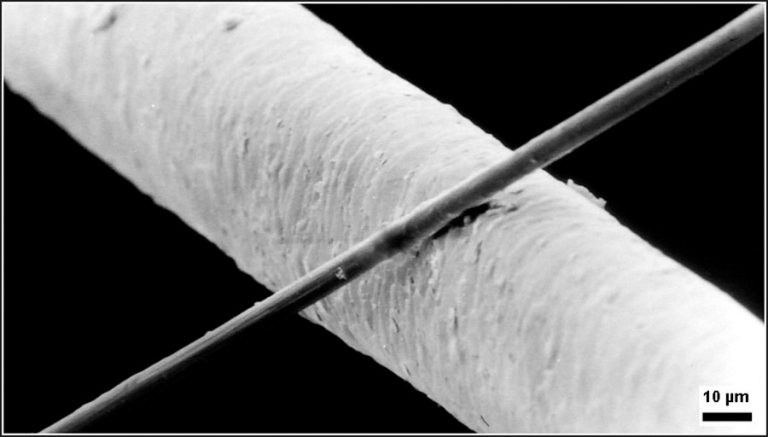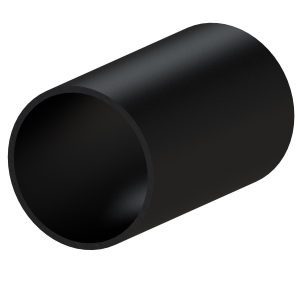March 29, 2021
Over the last few decades, carbon fiber has gone from being an exotic, space-age material, infrequently used, to becoming increasingly prevalent in all aspects of our rapidly advancing, technology-driven world. Carbon fiber tubes, extruded profiles, and fabricated sheets are now utilized extensively in aviation, automation, construction, manufacturing, medical equipment, military and sporting gear, and much more. Faster, more fuel-efficient planes, boats, and cars achieve these properties precisely because their frames and other components are fabricated with carbon fiber. The material’s durability, strength, longevity, low-maintenance costs, and low weight have also propelled the wind power industry by allowing for longer and more rigid turbine blades.
This superhero of materials, carbon fiber, is more resilient, lightweight, heat- and corrosion-resistant, and reliable than aluminum or steel. Who doesn’t want to drive a carbon fiber Batmobile? Carbon fiber is even being showcased in clothing. The spiffy carbon fiber fedora crafted by Biltmore is not just wearable but looks modishly futuristic.
But our main focus in this article is carbon fiber tubing: what it is, how it’s made, and what you can do with it.
The Basics of Carbon Fiber Tubes
The thin fibers—carbon atoms bonded together in microscopic crystals aligned to the strand’s axis—are robust for their size. The fine, but far from fragile, filaments measure a tenth of the thickness of a human hair, yet can be crafted to be cast in skin and skeleton roles in almost all arenas of contemporary living.
At its most basic, these sinewy strings, when woven into a tight matrix, can be reinforced with plastic polymer resin using heat and pressure to create a composite. The pattern of the weave and the type of resin (epoxy being the most common) dictate the strength and other properties of the composite. The carbon fiber itself determines the mechanical properties of the material. At the same time, the epoxy resin provides chemical resistance and forges a barrier against the elements.
This hardy and less bendable carbon fiber composite can be shaped into both T-slot profiles and tubes.

A 6 μm diameter carbon filament, compared to 50 μm diameter human hair (Source)
Carbon Fiber Tube Technology: Pullwinding
Framing Tech’s CarboSix carbon fiber profiles are fashioned using the cutting-edge “pultrusion” technology. Linearly-oriented carbon fibers are pulled through a resin bath and into a temperature-controlled mold to configure the desired contours.
In a similar manner, Framing Tech’s versatile CarboSix carbon fiber tubes are created by a method called “pullwinding.” In this process, the fibers are woven in varied orientations for increased torsional tension around a profile prior to being saturated with resin. Tubes thus produced are significantly stronger and more durable than those made by wrapping rods with carbon fiber sheets.
Framing Tech’s CarboSix carbon fiber components are a superior substitute for aluminum and steel because they are:
- Significantly lighter and stiffer than aluminum and steel
- More tension- and compression-resistant than aluminum and steel
- More thermal-resistant than aluminum and steel
- Less prone to corrosion than aluminum and steel
CarboSix carbon fiber profiles can be used exactly like their aluminum counterparts, as they mirror aluminum’s structural modularity and fabrication processes, from cutting to perforation. This makes the installation and coupling systems of carbon fiber similar to those of aluminum.
So too with our CarboSix carbon fiber tubes. These are inherently stronger than “roll-wrapped” rod-formed tubes, and can be manufactured at longer lengths as a result of not being constrained by the size of the “wrap.” Carbon fiber tubes are ideal for many applications, such as:
- Robotics and Automation
- Telesoping poles
- Metrology instrumentation
- Idler rollers
- Drone components
- Telescopes
- Industrial machines
- Aerospace applications
Your Carbon Fiber Tube Options
Framing Tech offers carbon fiber tubes in multiple sizes to meet the needs and specifications of commercial applications and personal projects, as follows.

C6-TUBE-10×7
Weight: 0.05 kg/m (0.04 lbs/ft)
Surface Area: 163.59 cm2
Length: 4 meters (157 in) (13.12 ft)

C6-TUBE-15×9
Weight: 0.18 kg/m (0.12 lbs/ft)
Surface Area: 232.08 cm2
Length: 4 meters (157 in) (13.12 ft)

C6-TUBE-24×21
Weight: 0.17 kg/m (0.11 lbs/ft)
Surface Area: 433.02 cm2
Length: 4 meters (157 in) (13.12 ft)

C6-TUBE-28×25
Weight: 0.17 kg/m (0.11 lbs/ft)
Surface Area: 433.02 cm2
Length: 4 meters (157 in) (13.12 ft)

C6-TUBE-32×29
Weight: 0.23 kg/m (0.15 lbs/ft)
Surface Area: 586.98 cm2
Length: 4 meters (157 in) (13.12 ft)

C6-TUBE-40×37
Weight: 0.29 kg/m (0.20 lbs/ft)
Surface Area: 2422.65 cm2
Length: 4 meters (157 in) (13.12 ft)

C6-TUBE-50×46
Weight: 0.48 kg/m (0.32 lbs/ft)
Surface Area: 3021.96 cm2
Length: 4 meters (157 in) (13.12 ft)

C6-TUBE-60×55
Weight: 0.72 kg/m (0.49 lbs/ft)
Surface Area: 3621.86 cm2
Length: 4 meters (157 in) (13.12 ft)
In addition, there is an array of carbon fiber connectors available for secure assembly of profiles and tubes.
According to Statista.com, worldwide carbon fiber demand is currently pegged at 98,000 metric tons and is projected to rise steadily. While the Batmobile may be out of reach to most of us, and the BMW i3 with a carbon fiber passenger cell a tad out of budget, Framing Tech’s CarboSix carbon fiber tubes may just be what you need to speed up your own efficient and sustainable enterprise.






